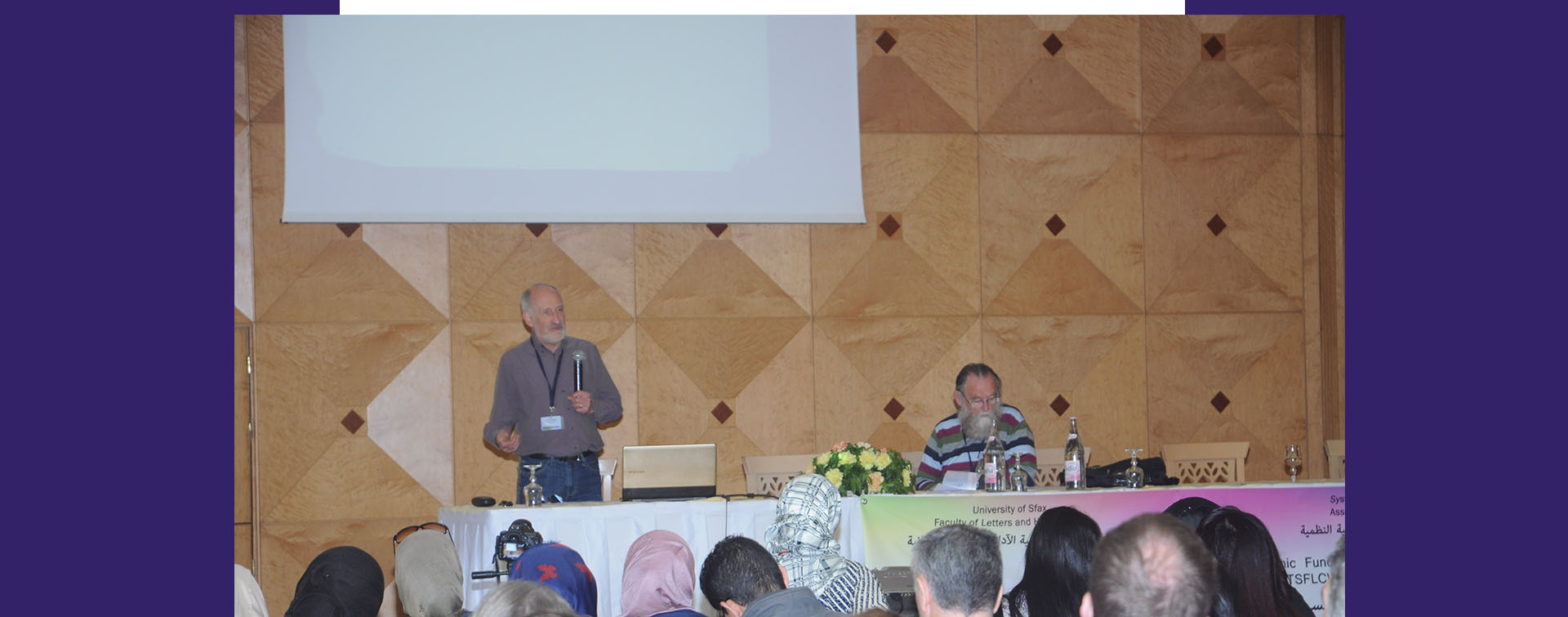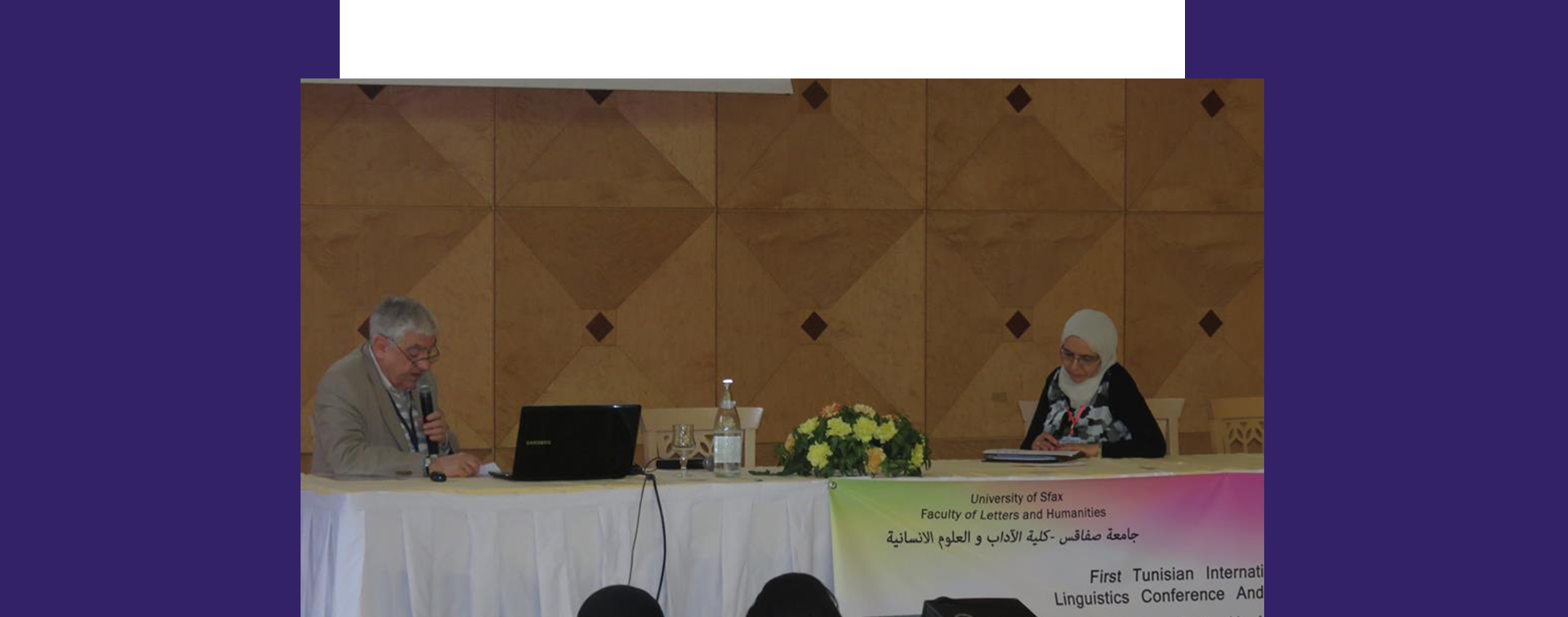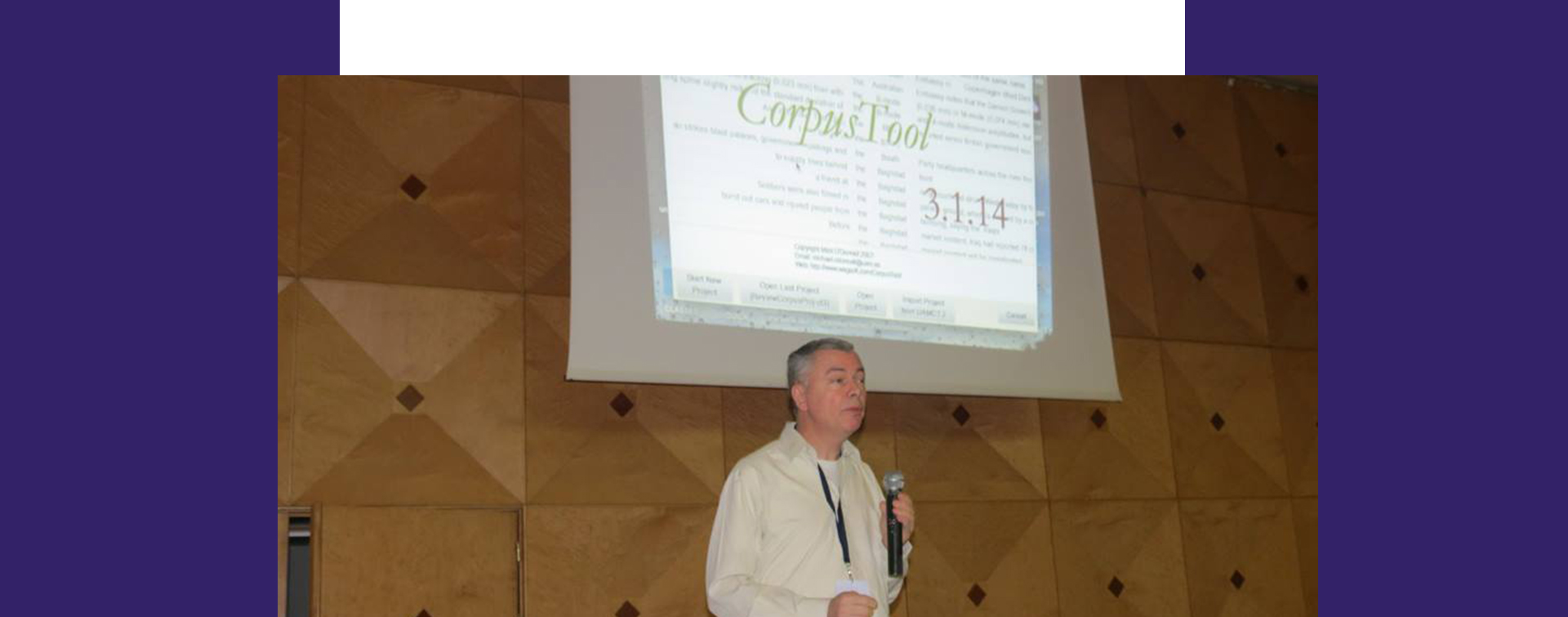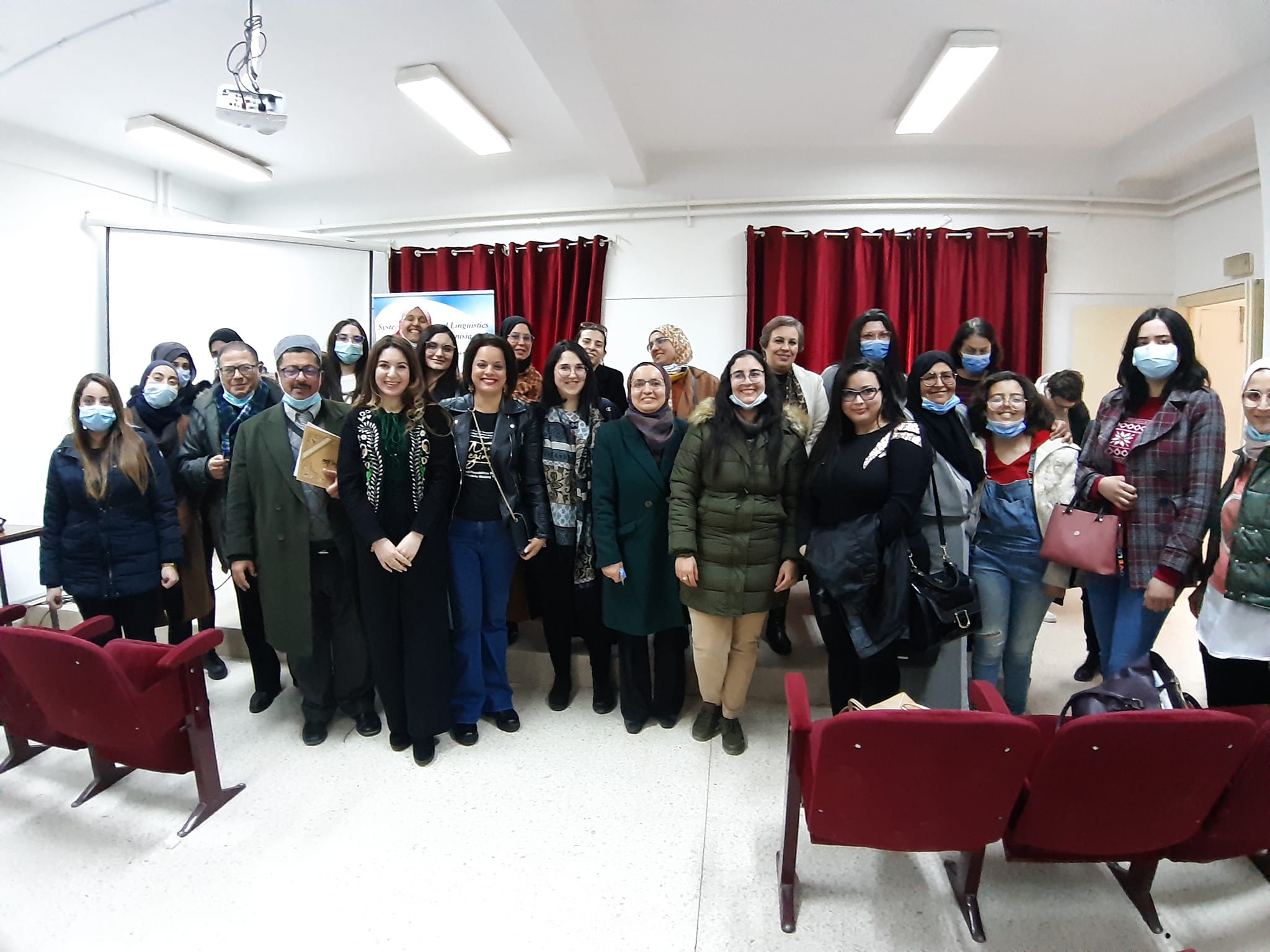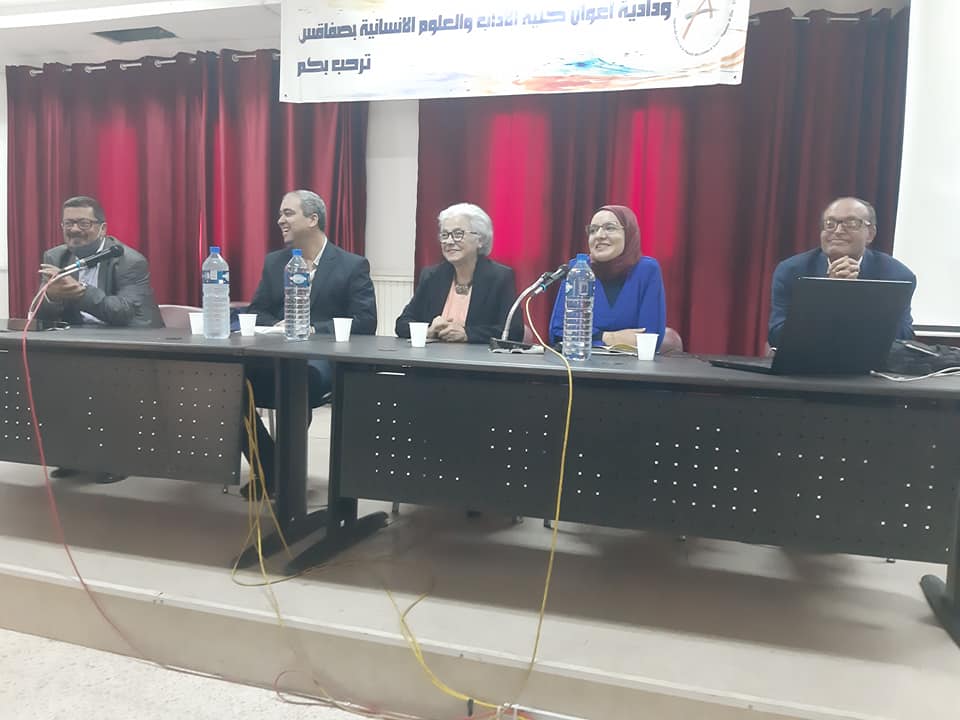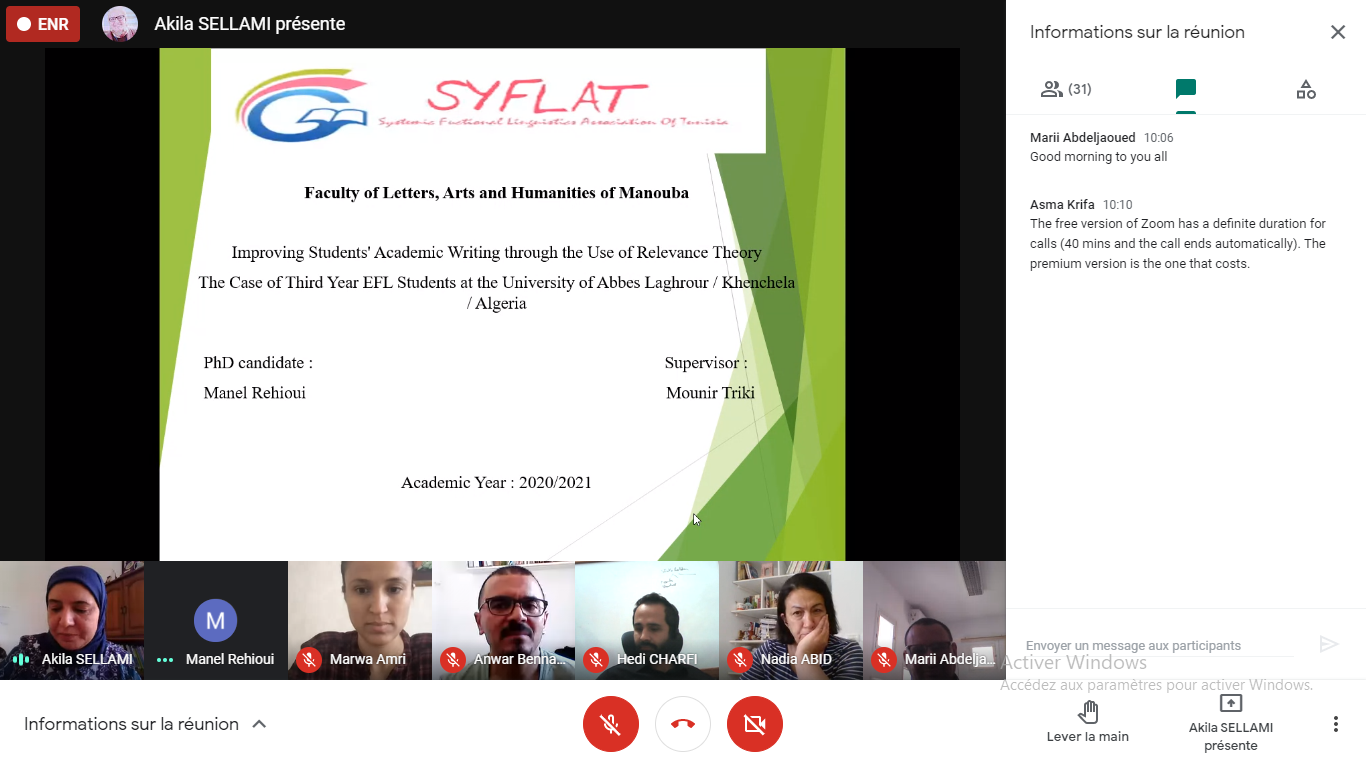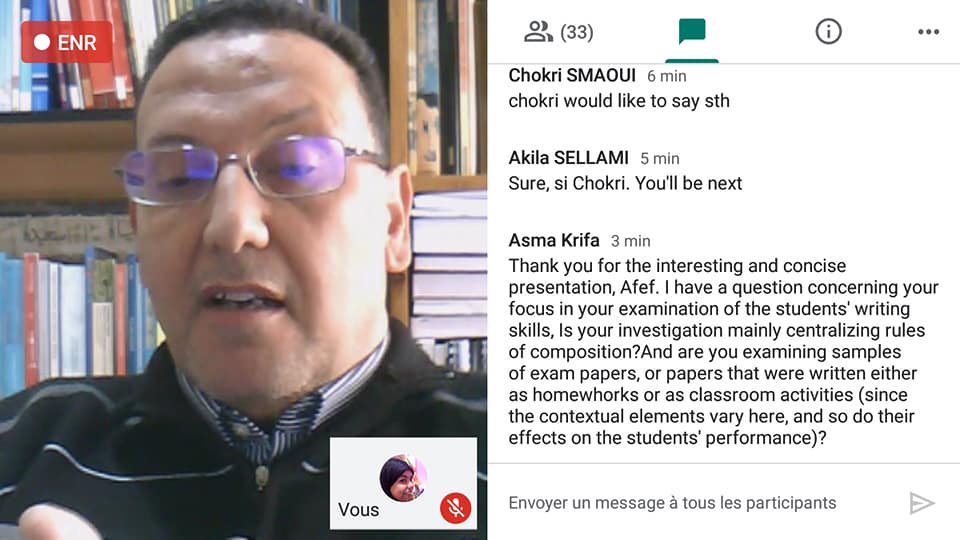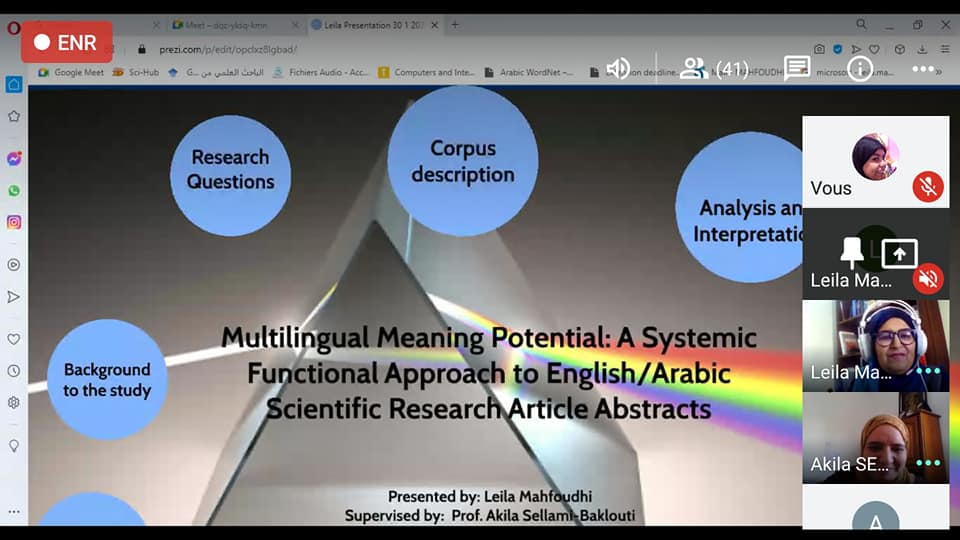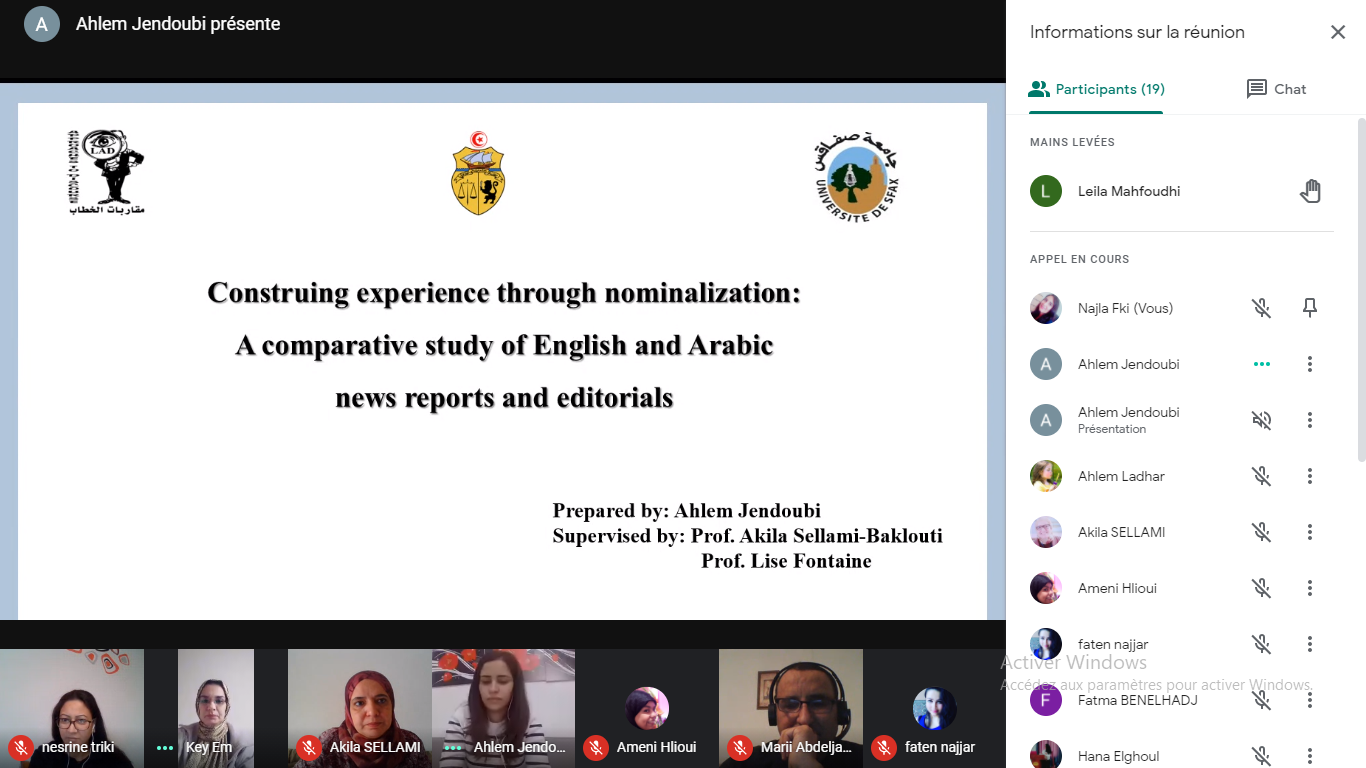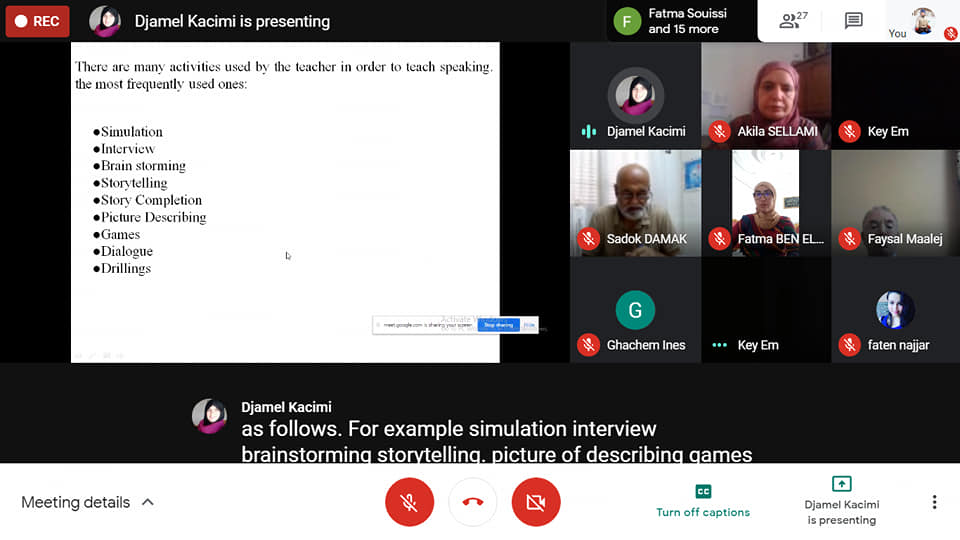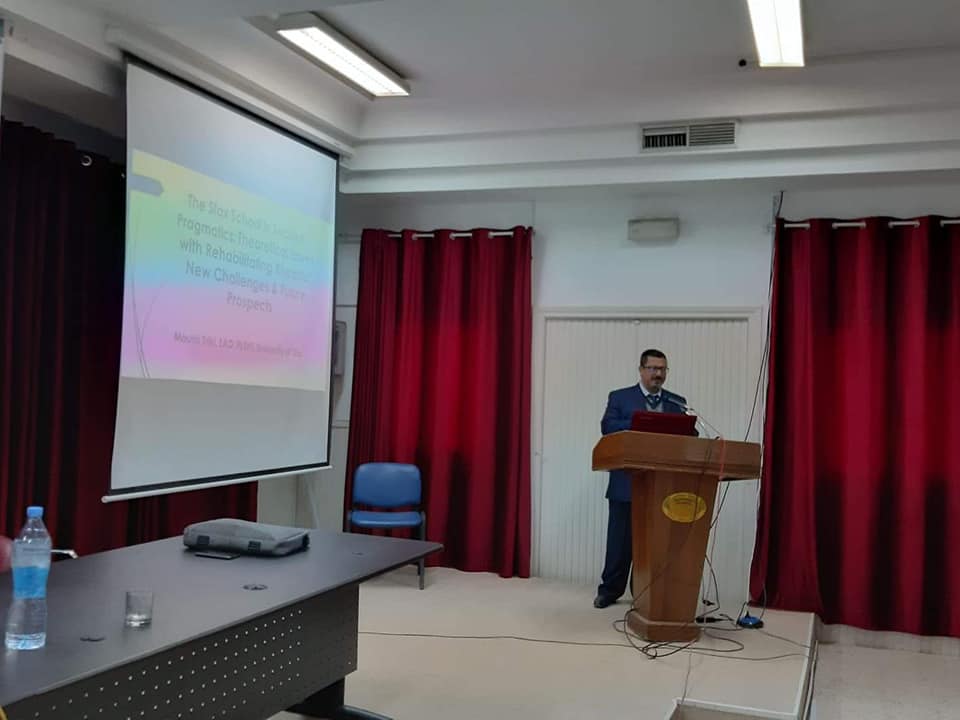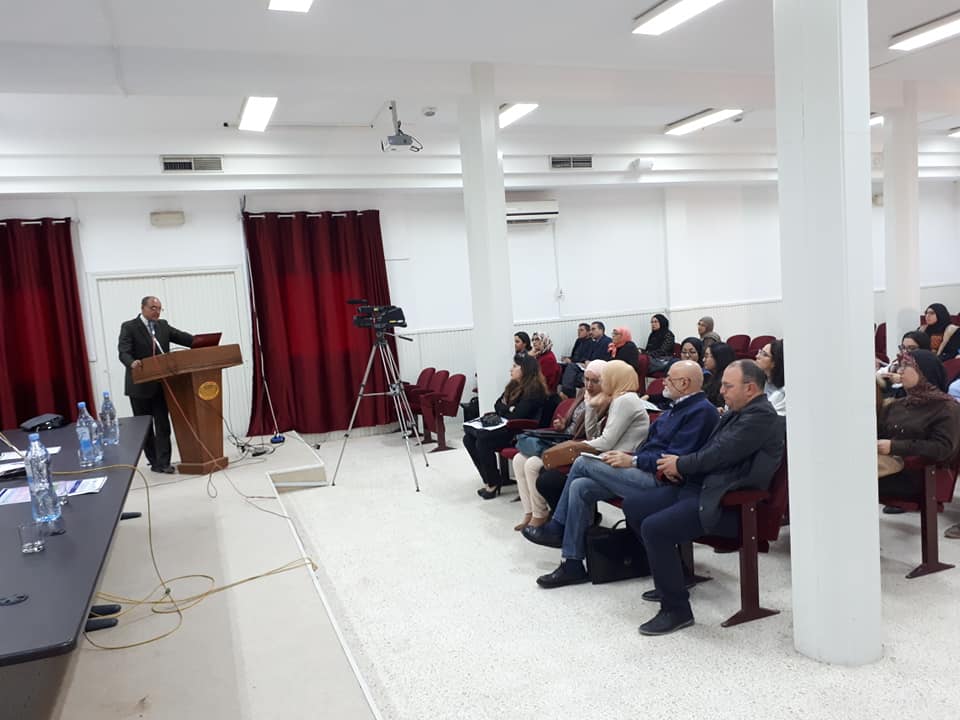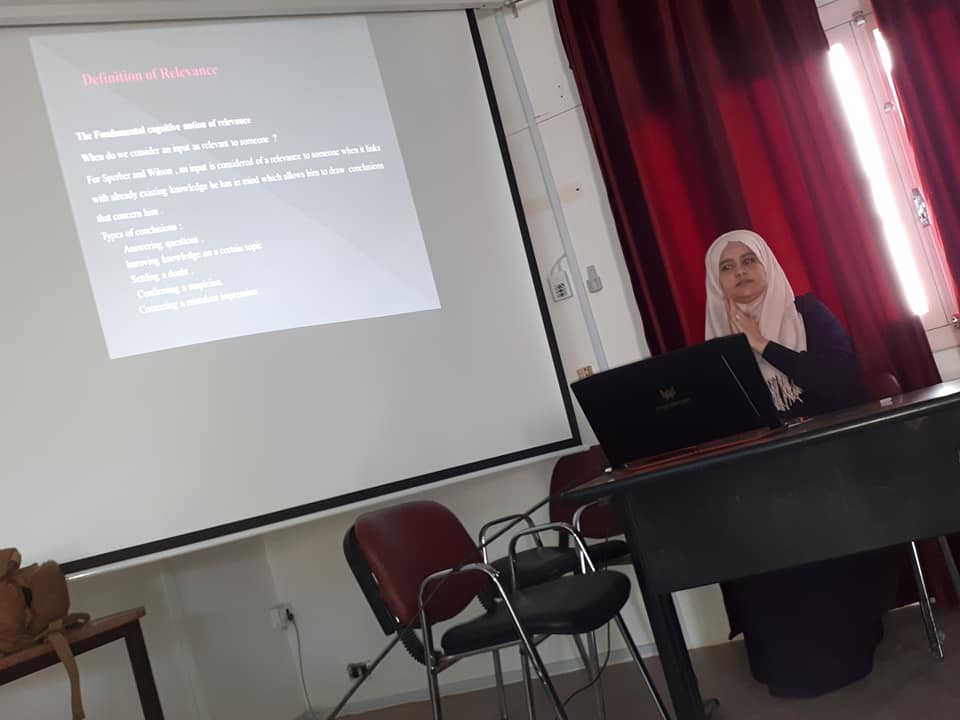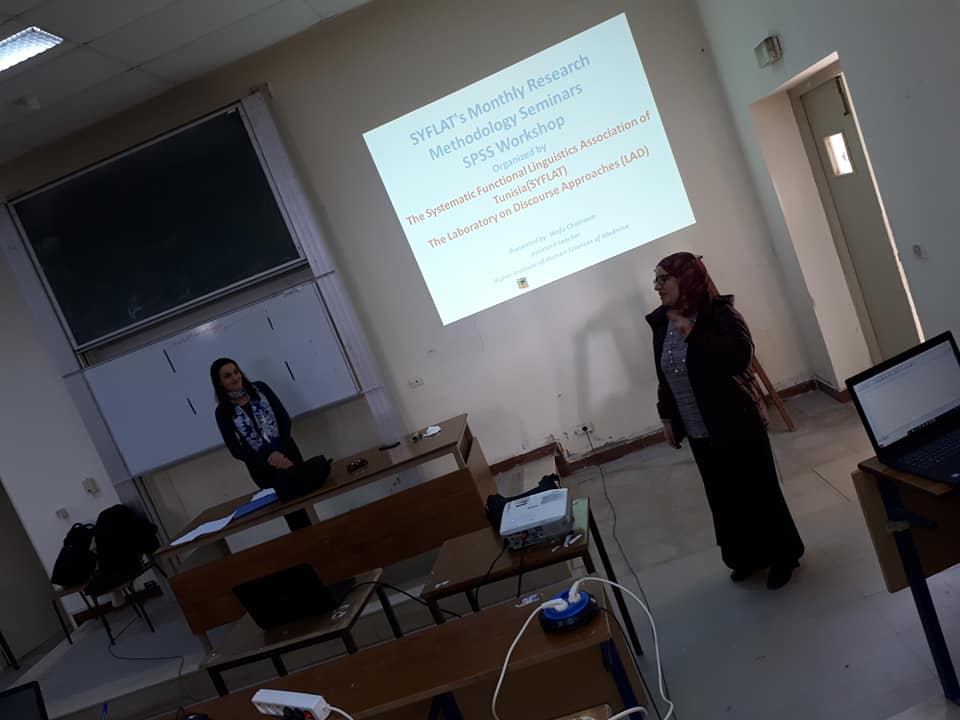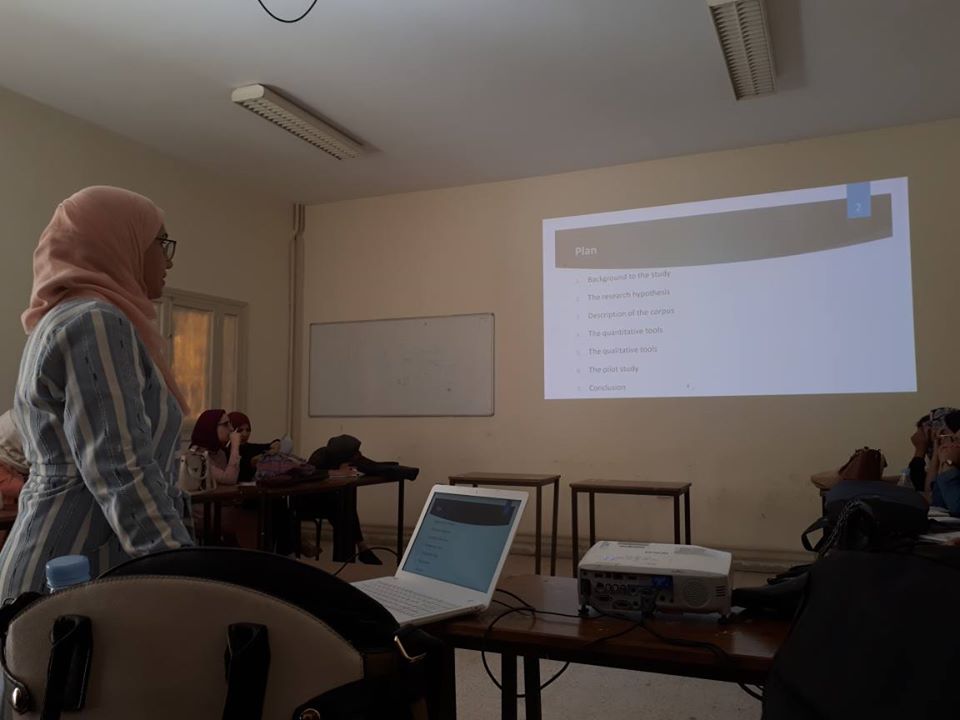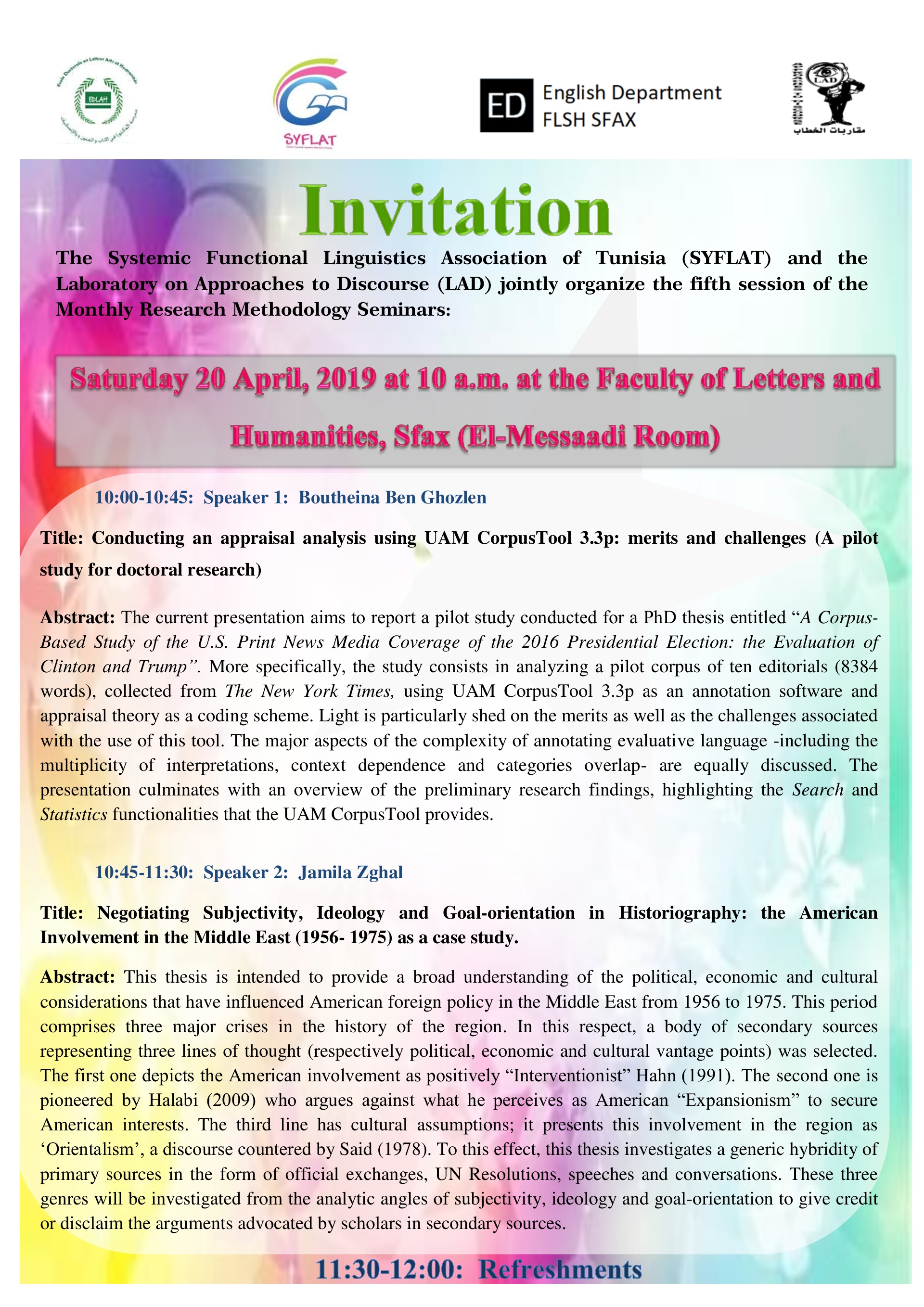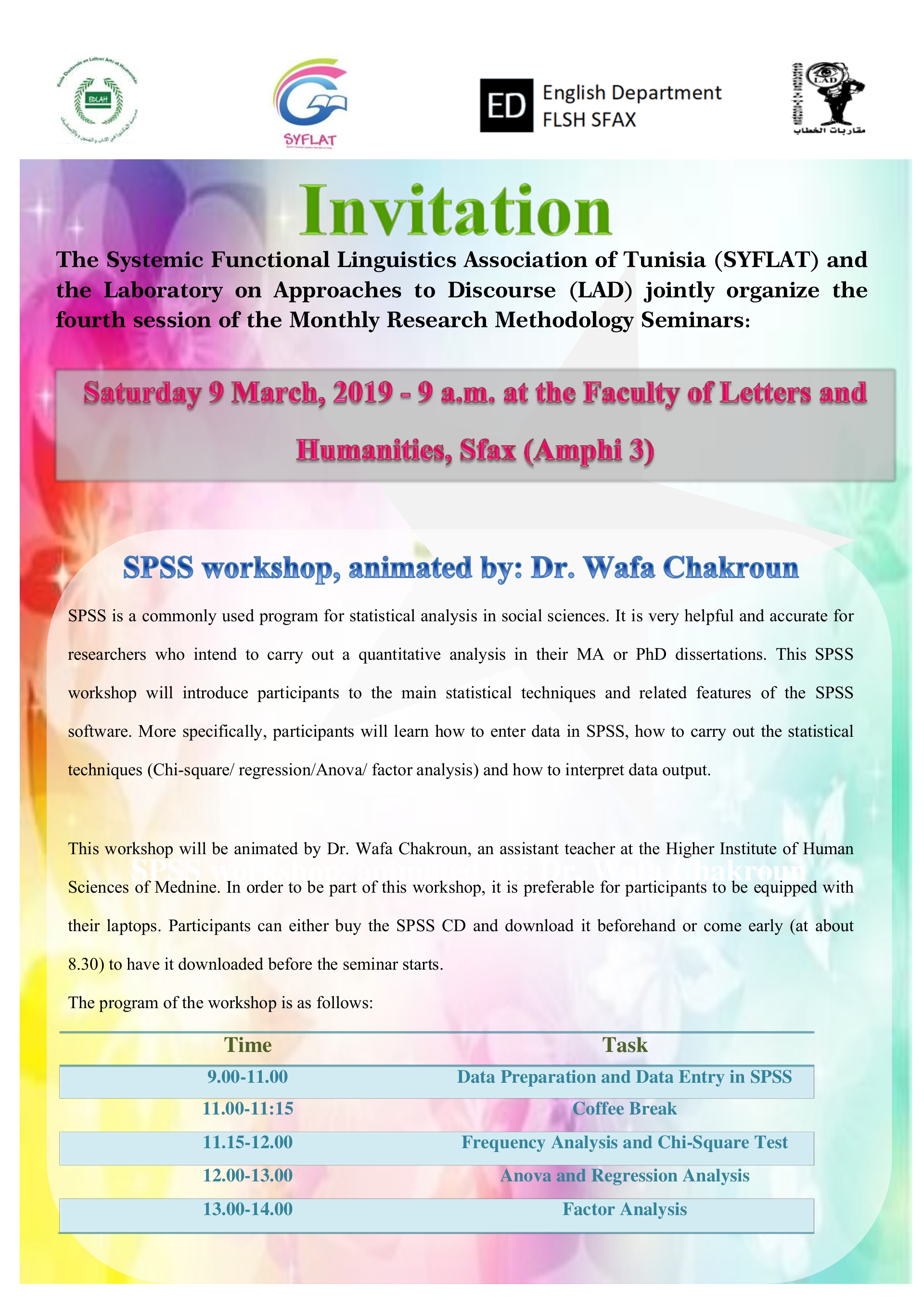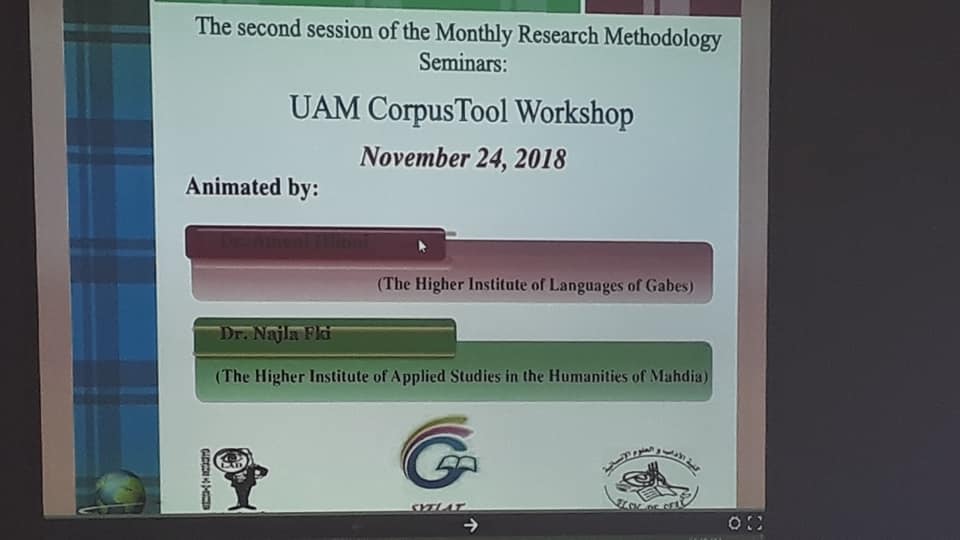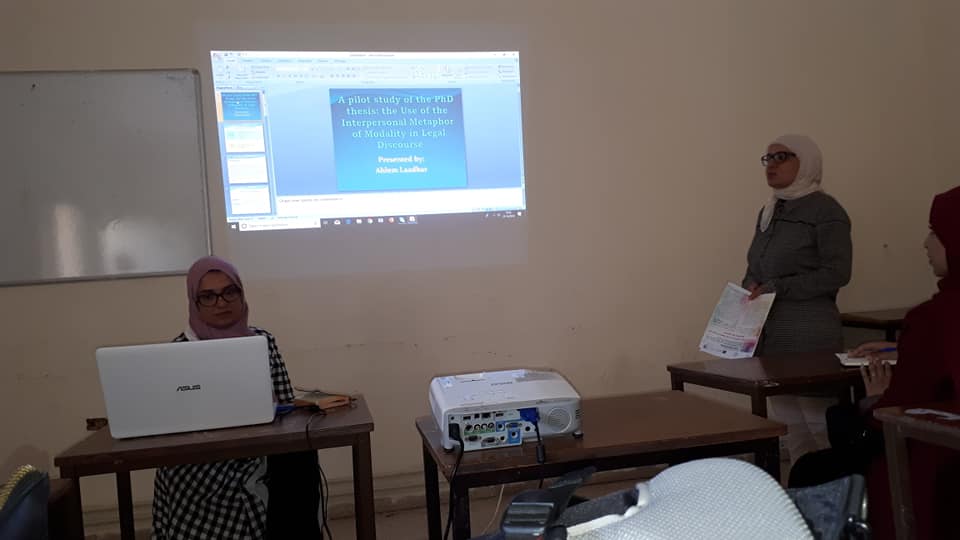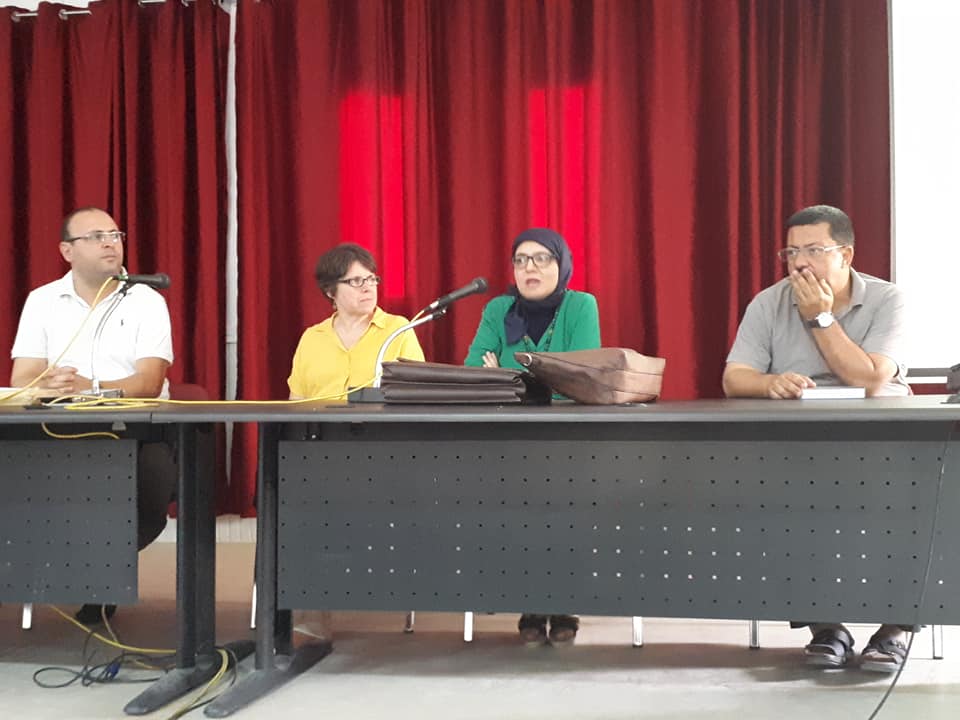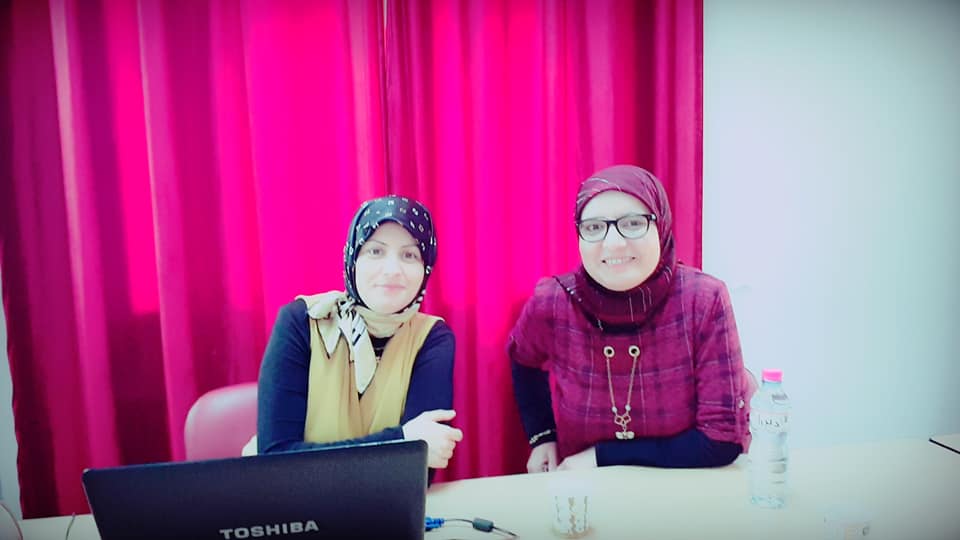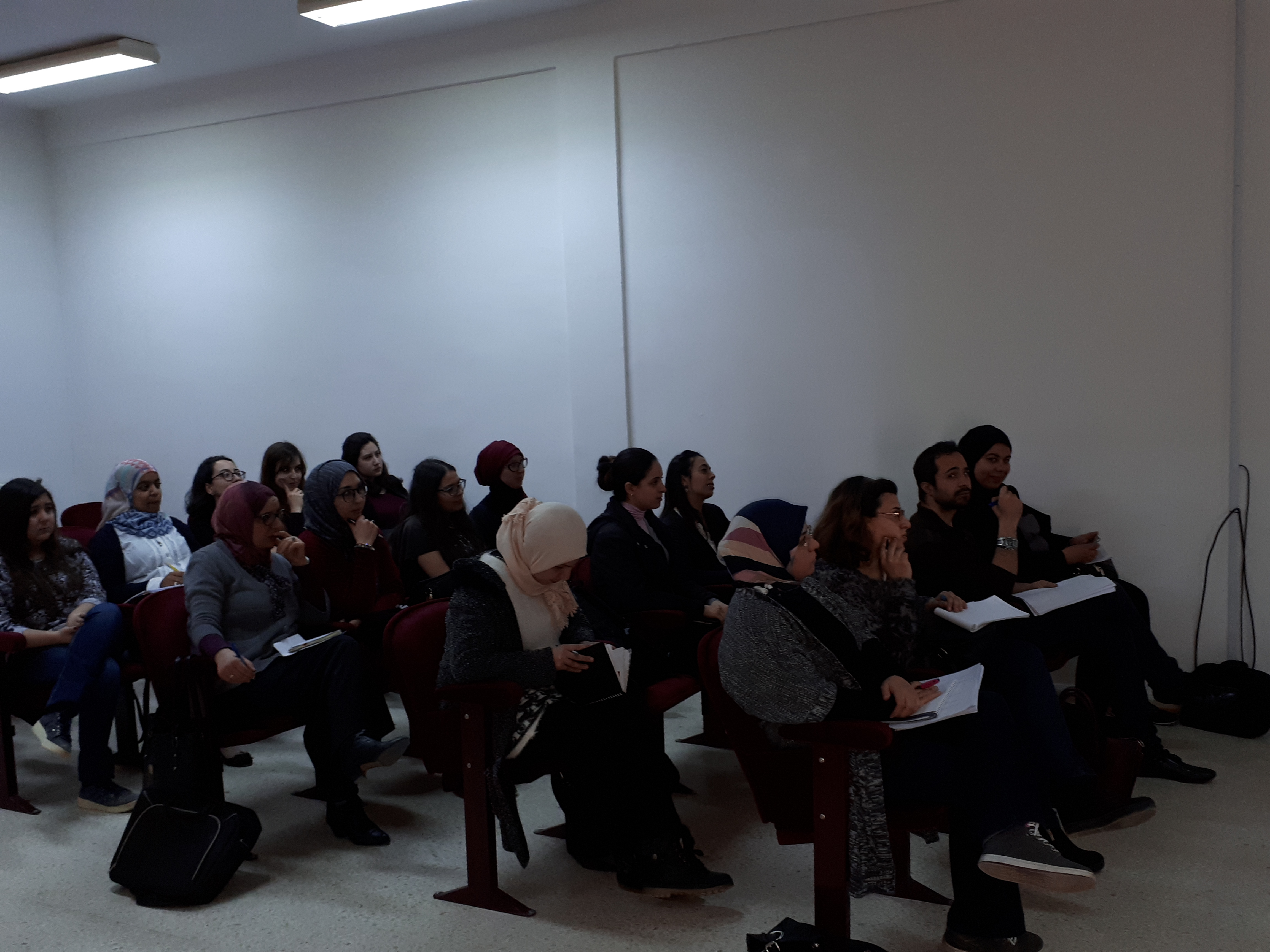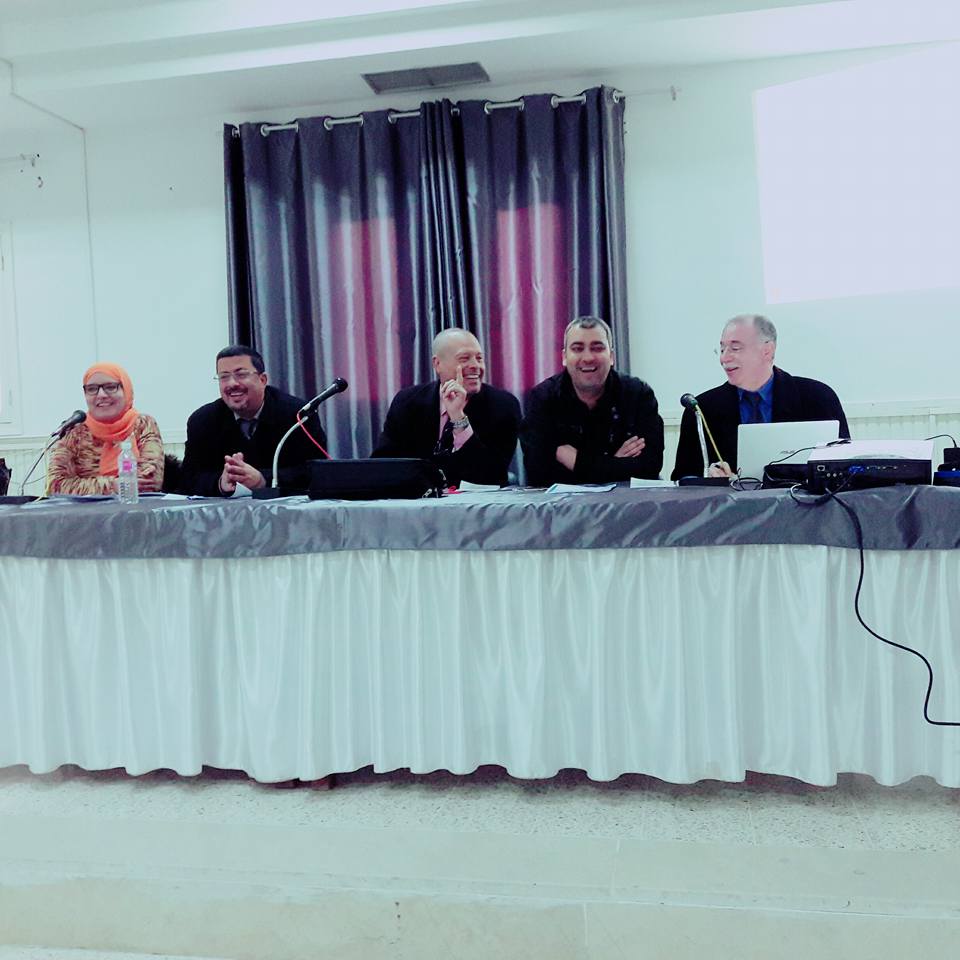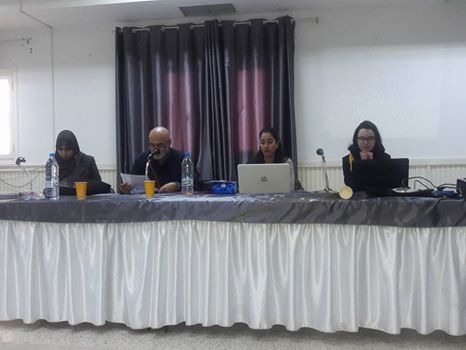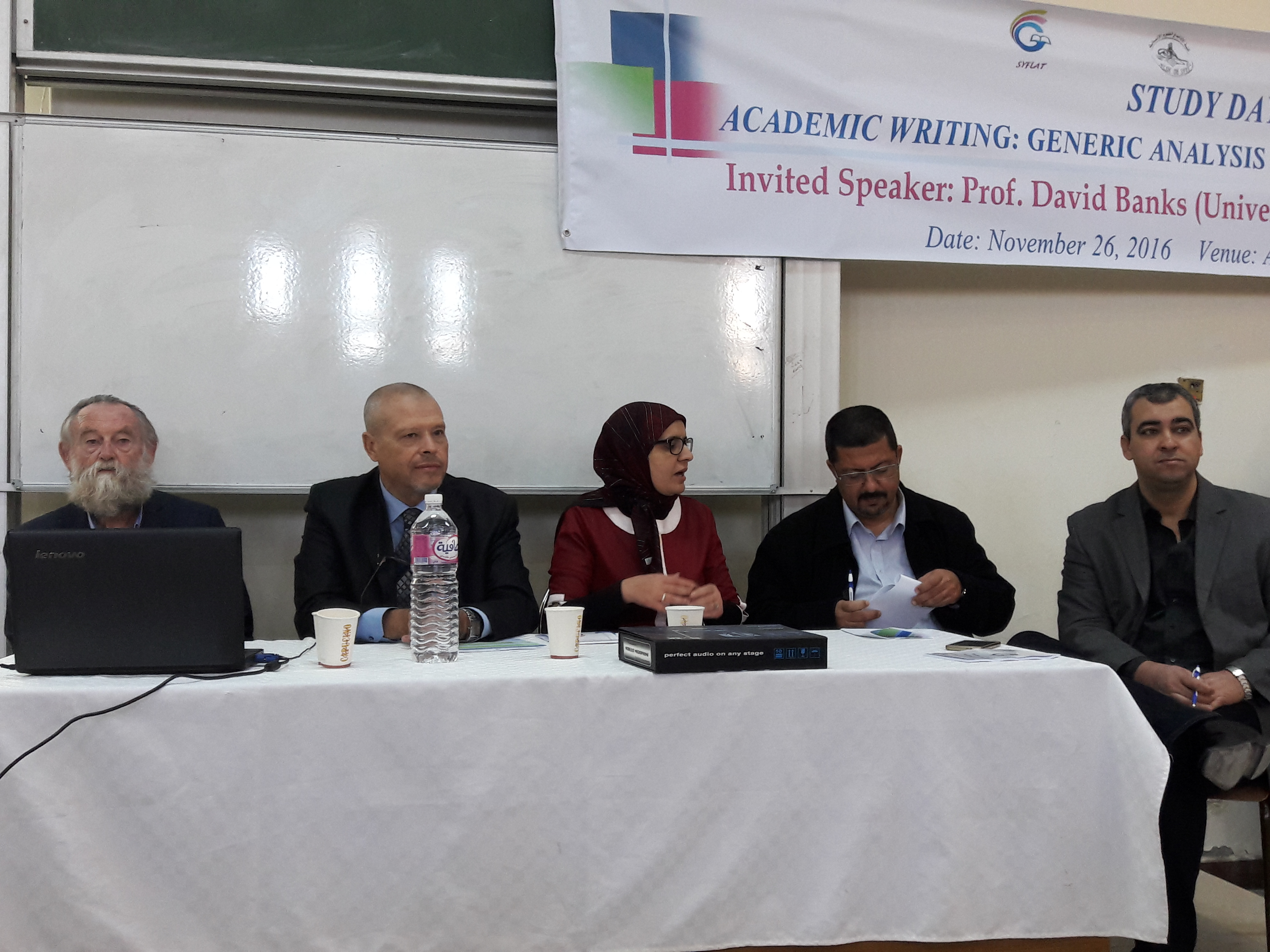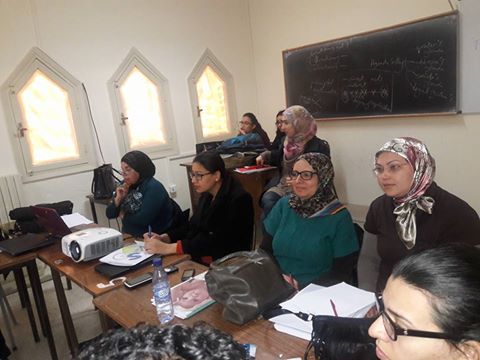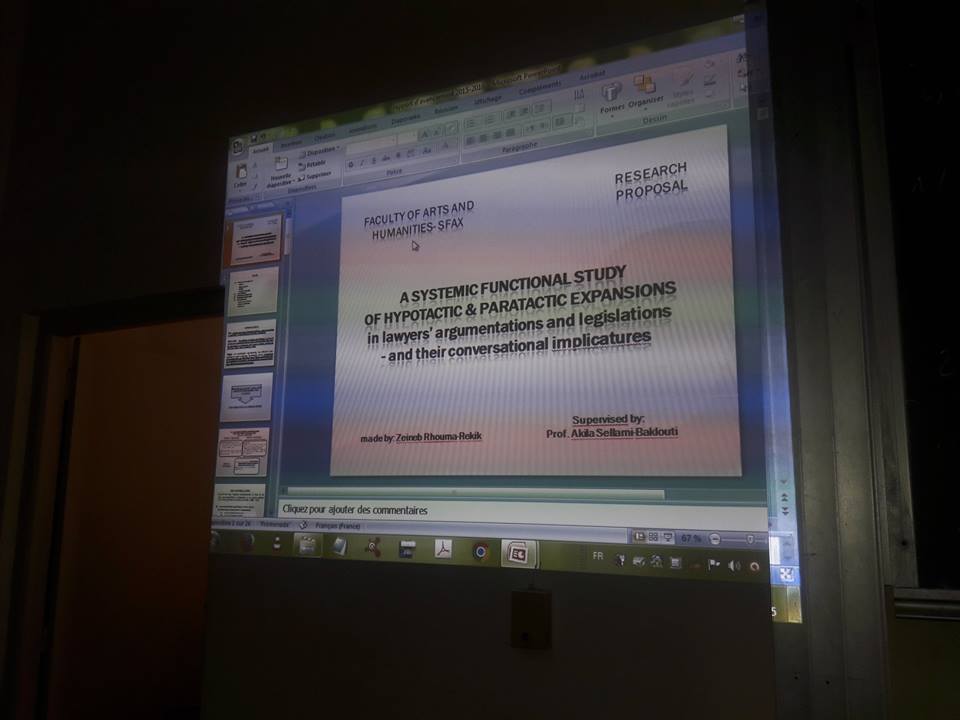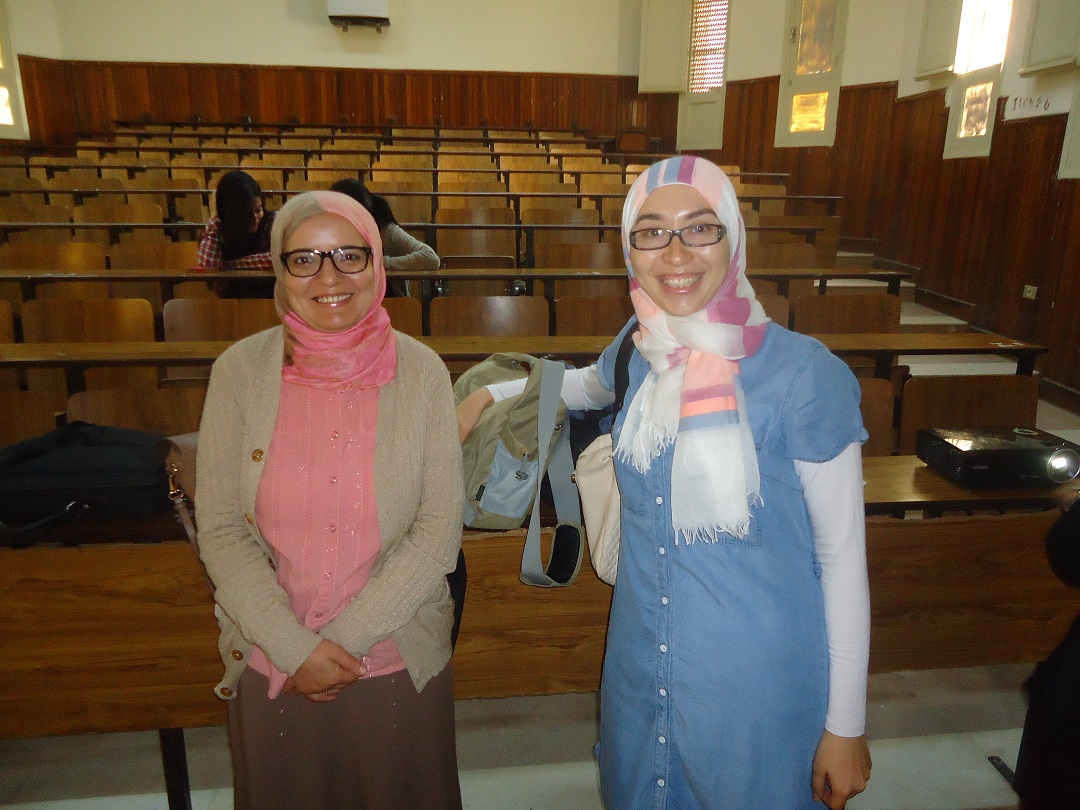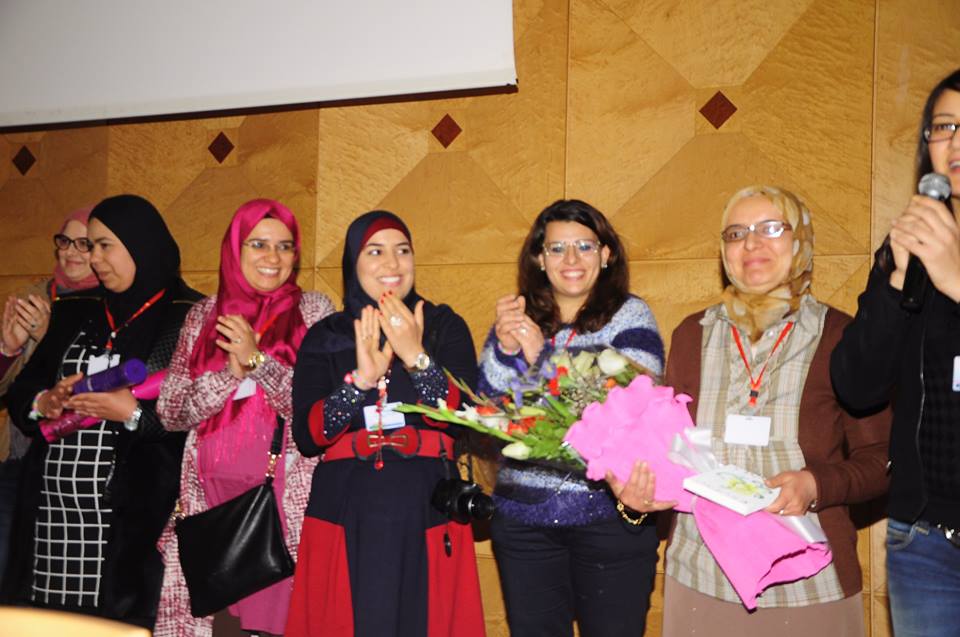

Latest Conferences

About us
SYFLAT is an academic association interested in the field of Systemic Functional Linguistics (SFL), a school of linguistics founded by the British linguist M. A. K. Halliday in 1961, and then developed and applied to many other fields. SYFLAT was founded on June 12th, 2014 (Reference: 2014S01520APSF1- JORT numero 70), following a series of monthly seminars on SFL held with the Research Laboratory Approaches to Discourse (LAD) at the Faculty of Letters and Human Sciences of Sfax, Tunisia.
Our Goals
SYFLAT is founded with the aim of fostering research in SFL in Tunisia. Its objectives are:
To enhance cooperation with other regional and national associations and academic institutions interested in the field of linguistics and its applications.
To organize conferences, meetings, study days, workshops and seminars related to SFL for students, teachers and researchers.
To create an interactive zone for researchers to exchange ideas, opinions and research.
To organize workshop and training sessions in research methodology.
Annual General Meeting
The annual general meeting is attended by all the association's members. At this meeting, the President, the Secretary and the Treasurer give annual reports to the members of the association.
Finances
The income and property of the association is to be applied solely towards the promotion of the purpose and objectives of the association.
Sign up for our Newsletter
Follow us and stay up to date on the latest news
Citations
-
Halliday
1975
“… language has evolved in the service of particular human needs … what is really significant is that this functional principle is carried over and built into the grammar, so that the internal organization of the grammar system is also functional in character.”
-
Halliday & Hassan
1976
"The term ‘text’ refers to any instance of language, in any medium, that makes sense to someone who knows the language; we can characterize text as language functioning in context.”
-
Halliday
2005
"The text is a product in the sense that it is an output, something that can be recorded and studied, having a certain construction that can be represented in systematic terms. It is a process in the sense of a continuous process of semantic choice, a movement through the network of meaning potential, with each set of choices constituting the environment for a further set.
-
Halliday
1964
"It is part of the task of linguistics to describe texts, and all texts, including those prose or verse, which fall within any definition of literature and are accessible to analysis by the existing methods of linguistics."
-
Halliday
1994
A discourse analysis that not based on grammar is not an analysis at all, but simply a running commentary on a text.
-
Hasan
2009
[I]n fact, we can claim quite confidently that there can be no comprehensive scientific linguistics without parole, and no study of parole without context: a viable linguistics needs to incorporate both.
-
Fawcett
2013
One of the strengths of SFL is its interest in text – both as evidence for building our models of language, and because many applications of SFL involve analyzing texts
-
Halliday
1994 - 2
It is of little use having an elegant theory of the system if it cannot account for how the system engenders text; equally, it adds little to expatiate on a text if one cannot relate it to the system that lies behind it.
-
Thompson
2013
In Systemic Functional Linguistics (SFL) terms, registers are envisaged as intermediate regions on the cline of instantiation between the system potential (the ‘whole’ lexicogrammar) at one end and the instance (a single text) at the other.
-
Matthiessen
2014
Right from the start, SFL has been designed to have the theoretical potential to be applied to solve problems in communities, ultimately to improve the human condition.
-
Martin
2009
The strength of SFL work on discourse probably lies in its relatively well developed descriptions of genre and functional grammar, and the adaptabilityof SFL modeling across modalities (to image, music and action for example).
-
SellamiBaklouti
2013
Translating a given text into frequencies of structural options is of little significance unless explanation is provided for such frequencies and this explanation can be provided only through mapping those choices to the contextual factors that have activated them.



